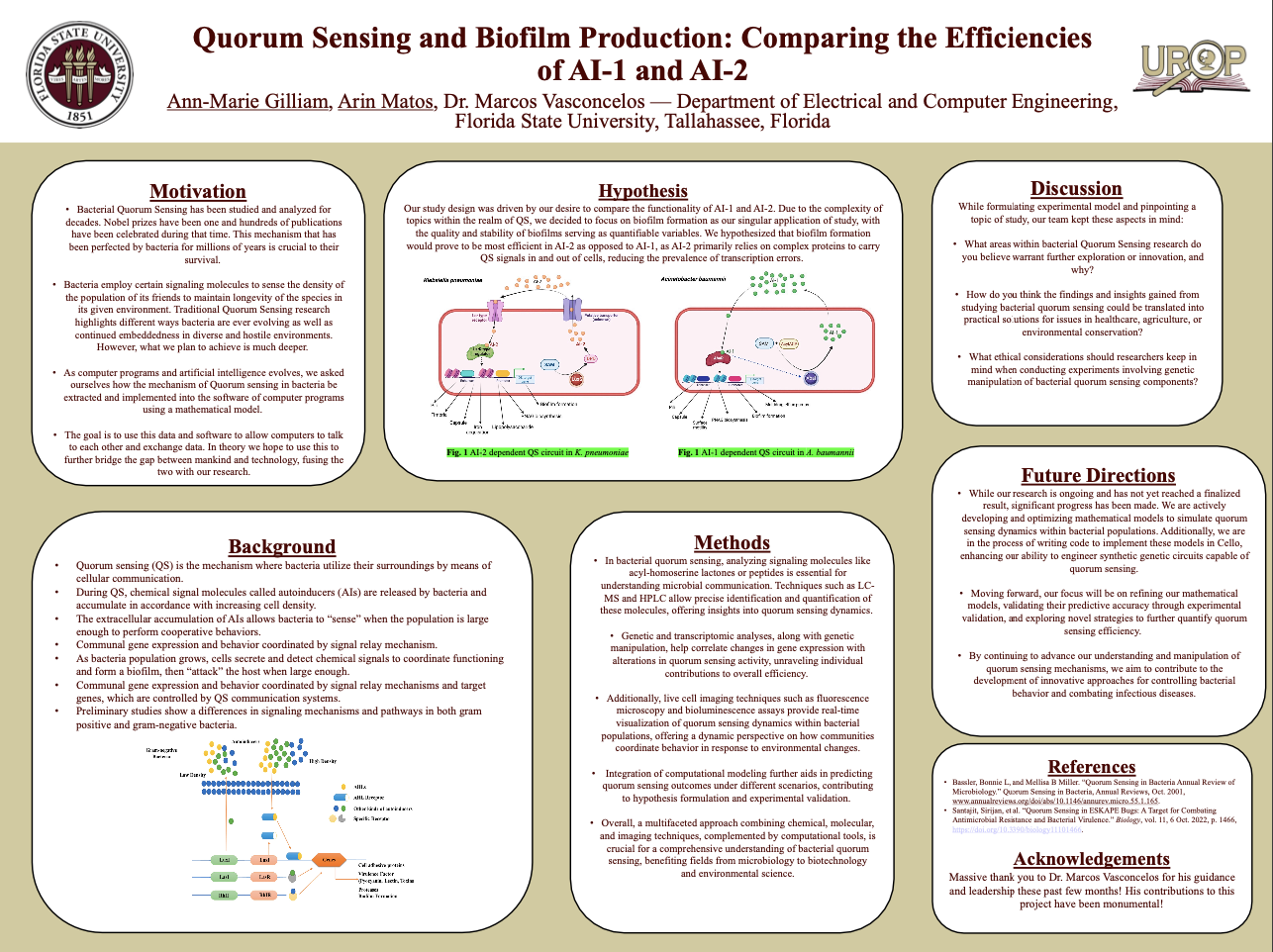Research Symposium
24th annual Undergraduate Research Symposium, April 3, 2024
Arin Joseph Matos Poster Session 5: 4:00 pm - 5:00 pm/426

BIO
Hello, my name is Arin, and I'm a sophomore at Florida State University, majoring in Interdisciplinary Medical Sciences. Im originally from Brooklyn, New York but currently live in Tampa, FloridaCurrently, I'm honing my skills as a medical assistant at Tallahassee Memorial Hospital, where I actively engage in patient care and support. Beyond my clinical role, I'm deeply passionate about research, and I'm proud to contribute as an undergraduate researcher in areas that hold the potential to impact healthcare positively.
Quorum Sensing and Biofilm Production: Comparing the Efficiencies of AI-1 and AI-2
Authors: Arin Joseph Matos, Dr. Marcos VasconcelosStudent Major: Interdisciplinary Medical Sciences Clinical Professions
Mentor: Dr. Marcos Vasconcelos
Mentor's Department: College of Engineering Mentor's College: FSU-FAMU Co-Presenters: Ann-Marie Gilliam
Abstract
While Quorum Sensing (QS) is performed by virtually all bacteria, the three main classifications of QS pose limitations to different species of bacteria. While primarily Gram-negative bacteria utilize Autoinducer-1 (AI-1) systems and only Gram-positive bacteria utilize Autoinducing Peptide (AIP) systems, both Gram-positive and Gram-negative bacteria utilize the Autoinducer-2 (AI-2) systems. We are interested in comparing the efficiencies of AI-1 and AI-2, particularly in the mechanism of biofilm production. Our experimental design consists of a computer-modeled simulation of biofilm production in AI-1 and AI-2, followed by an analysis of the efficiency and stability of the resulting biofilm. We hypothesized that biofilm formation would prove to be most efficient in AI-2 as opposed to AI-1, as AI-2 primarily relies on complex proteins to carry QS signals in and out of cells, reducing the prevalence of transcription errors.
Keywords: Bacteria, Quorum Sensing, Mathematical Simulation


